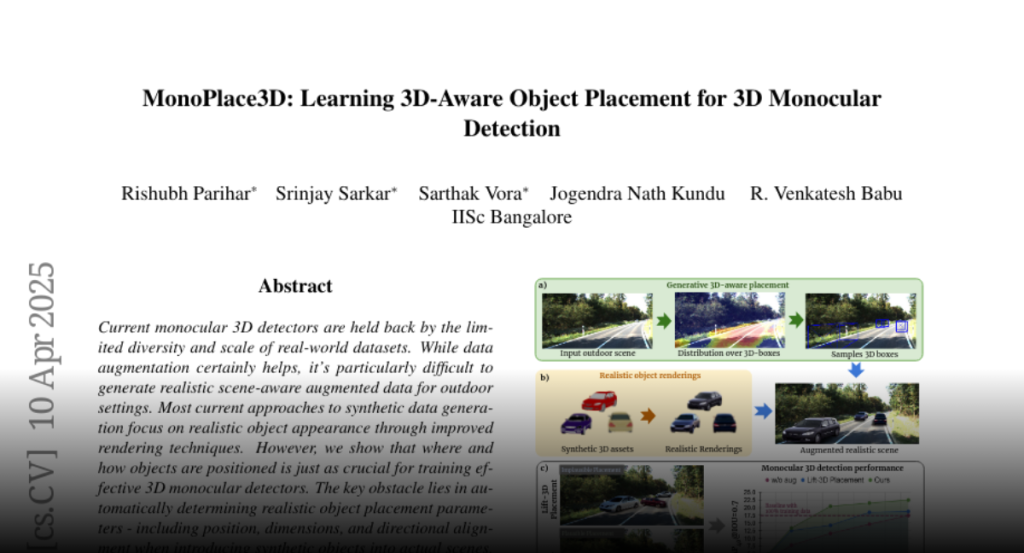Current monocular 3D detectors are held back by the limited diversity and
scale of real-world datasets. While data augmentation certainly helps, it’s
particularly difficult to generate realistic scene-aware augmented data for
outdoor settings. Most current approaches to synthetic data generation focus on
realistic object appearance through improved rendering techniques. However, we
show that where and how objects are positioned is just as crucial for training
effective 3D monocular detectors. The key obstacle lies in automatically
determining realistic object placement parameters – including position,
dimensions, and directional alignment when introducing synthetic objects into
actual scenes. To address this, we introduce MonoPlace3D, a novel system that
considers the 3D scene content to create realistic augmentations. Specifically,
given a background scene, MonoPlace3D learns a distribution over plausible 3D
bounding boxes. Subsequently, we render realistic objects and place them
according to the locations sampled from the learned distribution. Our
comprehensive evaluation on two standard datasets KITTI and NuScenes,
demonstrates that MonoPlace3D significantly improves the accuracy of multiple
existing monocular 3D detectors while being highly data efficient.

